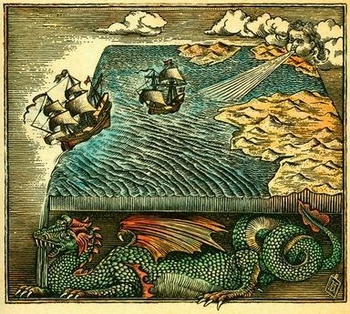A RandomProfoundThought:
I’m noticing an uptick of talk recently about “curriculum.”
The classic definition of the word seems to describe courses – or a plan of courses:
More and more we educators hear the word in the context of activities, modules, units, assessments and such, that is, the stuff that happens in a course and classroom. Has the definition of the word evolved?
Curriculum mapping is a thing – again. I mean, it was hip, then not really talked about as much, and now it’s hip again. I think its hiatus was due to Understanding by Design or the use of backwards design templates, which is a form of a map I suppose, but they weren’t called maps, rather backwards plans.
Let’s just say that a curriculum map is a plan that weaves instruction stuff, assessment stuff, and outcome stuff together.
It’s a map. It’s a representation of features that can guide – it’s a detailed visual or chart that shows parts of something.
I wonder – and I ask – how responsive is your curriculum? How interactive and malleable is your curriculum map? Does your map show different ways to ‘get somewhere?’ Is it responsive to ‘traffic’ and ‘congestion’ – can it be used to ‘re-route’ based on ‘road and weather conditions?’ Does your map show ‘toll roads’ or ‘scenic byways?’ Is your map easily interpreted by others? Does it have a ‘key’ or are you the only one who can read and use it? Is your map ‘up to date?’ What information do you use when you ‘draw’ your map?
How responsive is your ‘curriculum’ to students’ needs, interests, questions, and conversations?
How adaptable is your ‘curriculum’ to your learning and to the learning of your students?
Let’s draw in sand instead of cement … think Etch A Sketch rather than Sharpie.
(Too much?)
Thanks for reading.
This is the end of my #RandomProfoundThought.

